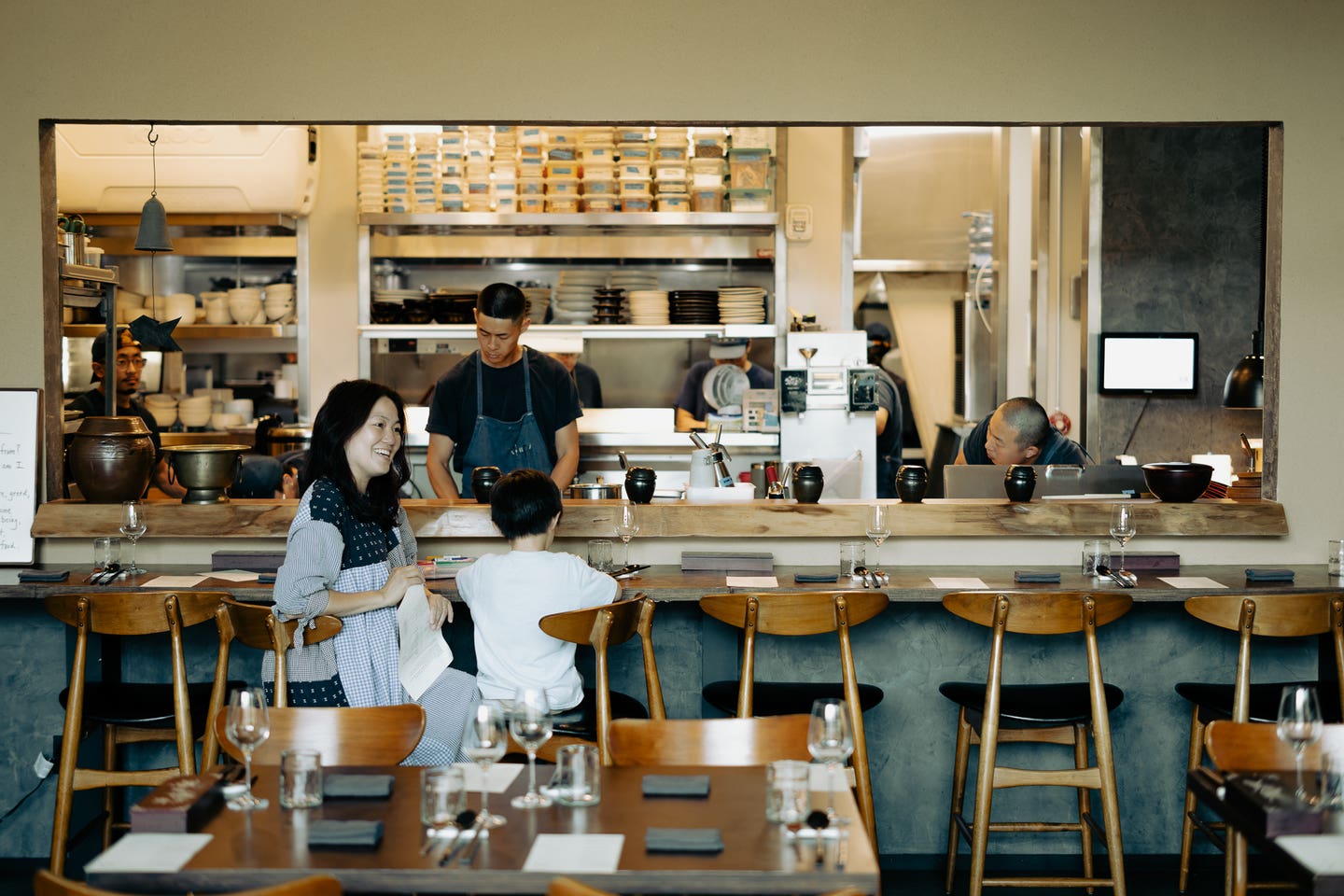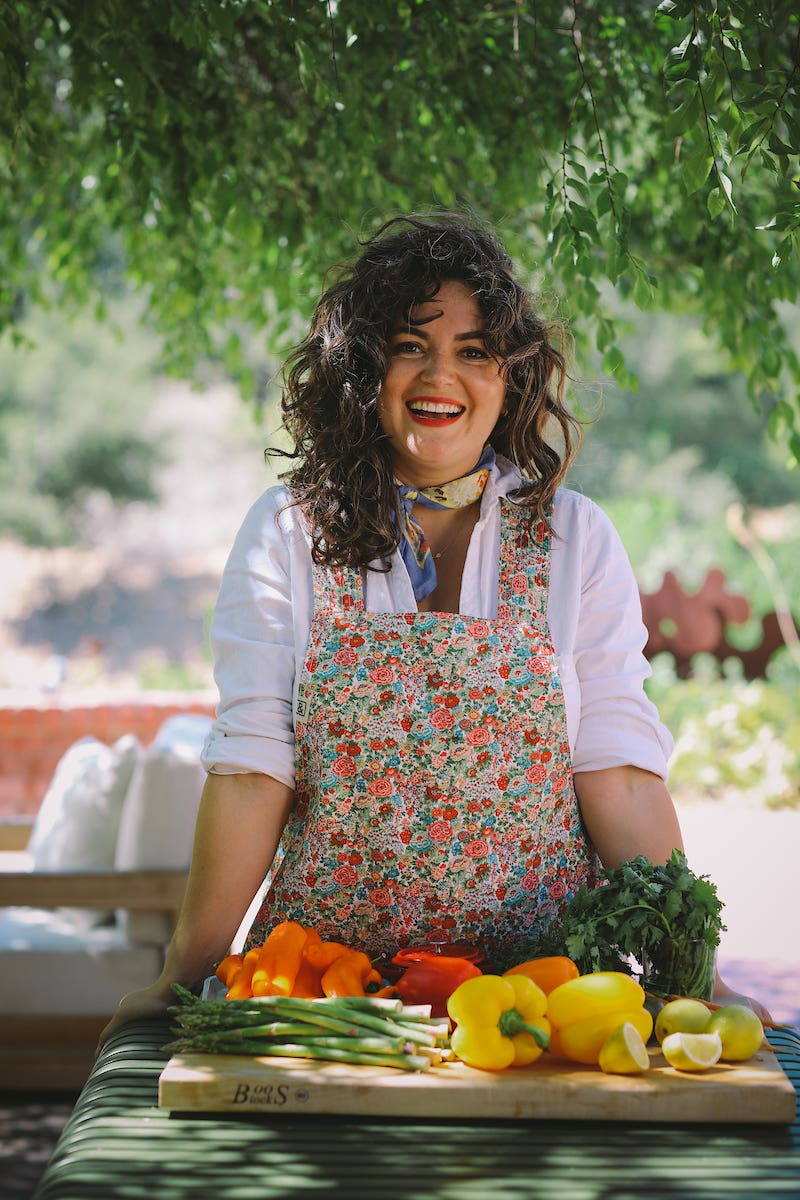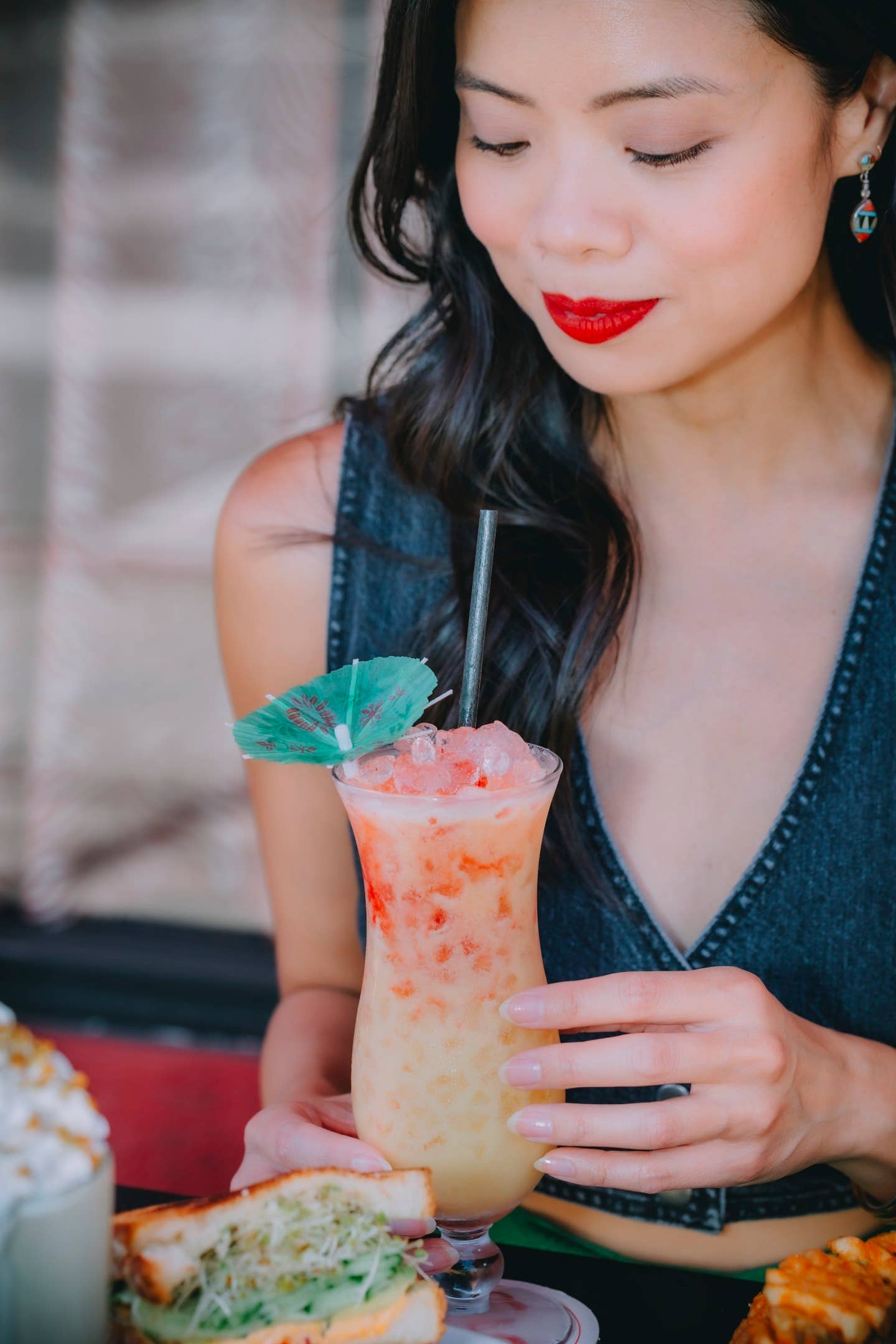“I want people to understand that mole is not a chocolate sauce,” Bricia Lopez says.
It’s early in the morning, and her kitchen team at the Oaxacan Guelaguetza Restaurant in Koreatown is already prepping their mole, stirring giant vats of broth, frying dozens of spices in huge pans, and blending all the ingredients with an industrial stone grinder. Founded by the Lopez family in 1994, Guelaguetza has become a center for the Oaxacan community in Los Angeles, offering dishes made with their family recipes and using carefully sourced Oaxacan ingredients.
Growing up in the restaurant, Bricia and her siblings, Paulina and Fernando, took it over from their parents to carry forth the tradition of Oaxacan cooking. Crowned L.A.’s “Oaxacan Princess” by Jonathan Gold, Bricia is now one of the foremost authorities on Oaxacan culture and cuisine in the U.S. as well as the author of the cookbook, Oaxaca: Home Cooking from the Heart of Mexico.
Born and raised in Mitla, Oaxaca, Bricia also comes from a long lineage of Oaxacan Mezcal craftsmen. She’s played a major role in popularizing mezcal in the U.S. through her mezcal dedicated bars, and earned the official title of L.A.’s mezcalera from Eric Garcetti in 2013. A true ambassador of Oaxacan cooking in L.A., Bricia’s an integral figure in the food community and known for her passion to share the food and drink traditions of her culture.
As the complex aroma of the mole-in-progress drifts toward us in the restaurant, Bricia and I sit down at a table in the back.
As Bricia tells me, there’s a world of ingredients that go into mole — a combination of aromatics, nuts, chiles, and sweeteners. In the long process, peanuts, sesame seeds, and almonds are first fried together with oregano, allspice, cloves, peppercorns and bay leaves. The chiles blend with the fattiness of the nuts and the sweetness of the plantains and raisins, then everything gets ground together in a stone grinder to achieve a velvety texture. While this grinding process can be replicated at home with a very powerful Vitamix, the texture will be more grainy without a stone grinder.
“It’s still delicious, but it’s not the same,” Bricia says.
Once all the ingredients are ground up, Guelaguetza adds broth, and then the chocolate enters the sauce in the final step.
“Only at the very end, you season it with salt – and yes: chocolate,” Bricia says. “The chocolate comes last, in the form of a tablet.”
This particular sweet chocolate from Oaxaca is toasted and ground with almonds, cinnamon, and sometimes sugar, and then compressed into a tablet that can be melted into the sauce. Bricia says that chocolate is actually used as a seasoning, like salt, in just a small amount – almost equal parts salt and chocolate.
“You season a marinara sauce with salt and honey but no one calls marinara sauce honey sauce,” Bricia says. “Same with barbecue sauce: you season it with brown sugar, but you don't call it a sugar sauce. Somehow, people who aren’t native to Mexico started calling mole a chocolate sauce because they never thought of seasoning a sauce with chocolate.”
Rather than chocolate, guajillo chiles are the essence of a mole sauce. The secret to a mole sauce, Bricia says, is how to balance the potent and powerful chiles with all the other ingredients — a balance that Guelaguetza has become famous for perfecting in their moles.
Chocolate, though, is still an integral ingredient in Oaxacan culture.
“In Oaxaca we drink a lot of hot chocolate,” Bricia says. “When my kids and my nieces go to Oaxaca, we have chocolate bread too. Every single day.”
Cacao, sugar, almonds, and cinnamon are the base for Oaxacan chocolate — what they call table chocolate. It melts into water, and is frothed with a molinillo — a wooden whisk — to make a cup of perfect hot chocolate. It’s common in Oaxaca to have hot chocolate before you go to bed or for breakfast.
The knowledge of how to balance the complexity of the Oaxacan flavor palate was passed down to Bricia from her mother and grandmother.
“When we still lived in Oaxaca, my mom took her stay-at-home role very seriously,” Bricia says. “Homemade meals every single day, with courses. We had a different agua fresca every day. She would make a feast every time, every day.”
Bricia says they would also go see their grandmother every Sunday for more delicious feasts, where Bricia was a fly on the wall. “You have to earn the trust of Oaxacan women before they'll let you into their kitchen,” she says, “But once you have their trust, they’ll welcome you.”
“Now my mom trusts me, and she respects me in the kitchen,” Bricia says. “Both my mother and grandmother were very possessive of their kitchens. You weren’t allowed to help — you could only watch. You weren’t even allowed to ask questions. Just watch and smell. I was just so taken aback by how they moved in the kitchen and how they were able to create these delicious meals.”
Her earliest food memories were more of the smells, than the tastes, in the kitchen.
“The smoked chile pasilla in my grandma’s house — her hair always smelled like smoked chiles. Her kitchen was always filled with smoke. And the fresh tortillas, the smell of fresh tortillas, the smell of smoking chiles.”
Bricia said she really learned how to cook though after her father opened up the restaurant when they moved to L.A.. As she grew up, she started to ask questions, and her mother opened up.
“It was only when we were in the process of writing our first cookbook that we spent time in Oaxaca and I learned with her as an adult,” Bricia said. “But having that background, as a child, watching my mom, and my grandma, and then actually executing it as an adult, was a journey.”
She took for granted how great Oaxacan food was until she moved to the U.S., and only then did she realize there was a world where she wouldn’t be able to have that food. It’s through the restaurant that she can share the flavors of her childhood with L.A., and pass the precious knowledge of Oaxacan flavors down to her children, too.
“I was so blessed we had the restaurant,” Bricia says. “I love seeing kids enjoy the food their parents had when their parents were kids… we have customers who started coming when they were babies and they grew up here… and this extends to my own family and my kids… I want them to understand what great food is supposed to taste like. I want them to understand flavor.”
Culture and identity are so connected to flavors, smells and food traditions that get passed down from one’s family; preserving these to share not just with family, but entire communities is such a gift. This generosity is what makes Bricia such an iconic figure in Los Angeles, and how she has so rightly earned the honorary Princess title from Jonathan Gold, though I prefer Mole Queen.
In case you want to make mole at home, Guelaguetza has its own line of mole starters. You can order them here.
After working for 25 years as a screenwriter in Europe – where people have a very different relationship to food – Jennifer returned to the U.S. and founded Narrative Food in 2010, with the goal of inspiring people to get back into their kitchens with curated local ingredients, and creating lasting memories around the table with their loved ones. Storytelling has always been central to everything she does, whether with images or through food. In 2022 Narrative Food narrowed its focus to gifts that give back to related non-profits, shipping nationwide and specializing in curating custom gifts for companies who want to share their brand story through impact-driven gifting.





